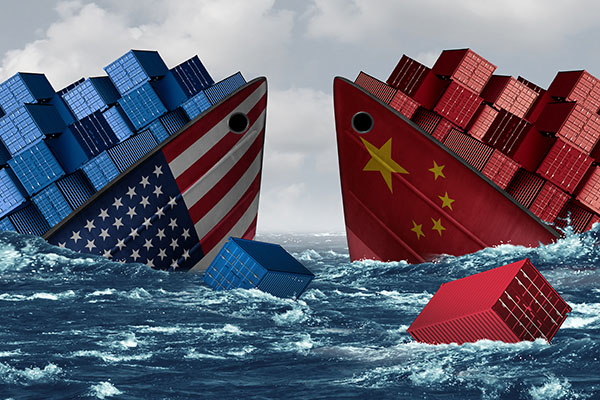Port Tracker points to import volume gains but is wary of tariff impact
Against the backdrop of increasing retail sales and an ongoing “pull forward” efforts by retailers to import goods in advance of new tariffs levied on products made in China, various import volume records continue to be set in 2018, according to the most recent edition of the Port Tracker report, which was released this week by the National Retail Federation (NRF) and maritime consultancy Hackett Associates.
Against the backdrop of increasing retail sales and an ongoing “pull forward” efforts by retailers to import goods in advance of new tariffs levied on products made in China, various import volume records continue to be set in 2018, according to the most recent edition of the Port Tracker report, which was released this week by the National Retail Federation (NRF) and maritime consultancy Hackett Associates.
The ports surveyed in the report include Los Angeles/Long Beach, Oakland, Tacoma, Seattle, Houston, New York/New Jersey, Hampton Roads, Charleston, and Savannah, Miami, Jacksonville, and Fort Lauderdale, Fla.-based Port Everglades. Authors of the report explained that cargo import numbers do not correlate directly with retail sales or employment because they count only the number of cargo containers brought into the country, not the value of the merchandise inside them, adding that the amount of merchandise imported provides a rough barometer of retailers’ expectations.
“Tariffs on most consumer products have yet to take effect but retailers appear to be getting prepared before that can happen,” NRF Vice President for Supply Chain and Customs Policy Jonathan Gold said in a statement. “We’re seeing new record levels every month this summer. Much of that is to meet consumer demand as tax reform and a thriving economy drive retail sales, but part of it seems to be concern over what’s to come. The good news for consumers is that avoiding tariffs holds off price increases that will inevitably come if the reckless and misguided trade war is allowed to continue.”
For June, the most recent month for which data is available, Port Tracker reported that U.S.-based retail container ports handled 1.85 million TEU (Twenty-Foot Equivalent Units), which marked a 1.6% gain over May and a 7.8% annual gain. The report’s authors stated that June represents a new record for monthly container import volume, topping August 2017’s 1.83 million TEU.
What’s more, July was estimated at 1.88 million for a projected 4.4% annual gain, and August is pegged at 1.91 million TEU and is also expected to be up 4.4%. If these numbers hold, July and August will both outpace June and also set new records.
September and October are forecasted to hit 1.82 million TEU and 1.88 million TEU for annual gains of 2.1% and 4.9%, respectively.
Port Tracker said that the first half of 2018 came in at 10.3 million TEU, which marked a 5.1% annual gain, adding full-year 2018 volume is forecasted to be up 4.4% to 21.4 million TEU and top 2017’s 20.5 million TEU for a new record.
In his editorial in the report, Ben Hackett, founder of Hackett Associates explained that the strong growth seen in GDP was due to consumer and business spending, as well as a surge in exports ahead of retaliatory tariffs from China in response to proposed U.S. tariffs.
“The volatility and non-fact-based decisions coming from Washington have created uncertainty of what is and what is not,” wrote Hackett. What you see and what you hear may well not be reality anymore.
“The biggest uncertainty and loss of reality is the growing trade war. Steel and aluminum tariffs have already taken effect, tariffs of 25 percent on $34 billion in Chinese goods took effect in July and will take effect on another $16 billion later this month,” he noted.
“Tariffs on another $200 billion in Chinese products – at least 10 percent and possibly 25 percent – have been proposed, and the total could grow to cover all $500 billion in imports that come from China. That does not include the North American Free Trade Agreement discussions or threats against Japan, Taiwan and South Korea. Threatening to raise the tariff levels even higher in response to announced retaliation is also unhelpful. President Trump needs to realize that the trade war will cause significant damage to the US economy, hitting prices, consumption, the agricultural sector and industry trying to find replacement sources in an unfriendly world where friends have become foes and foes have become friends.”
While 2018 is expected to see import volume gains, Hackett cautioned that may not be the case, as he said there could be a downturn going into 2019, due to the trade war, coupled with an anticipated economic slowdown based on forward-looking indicators.













